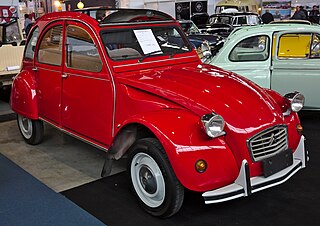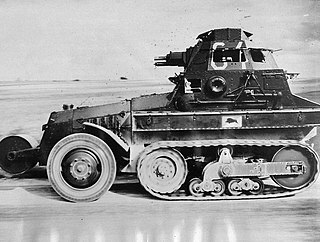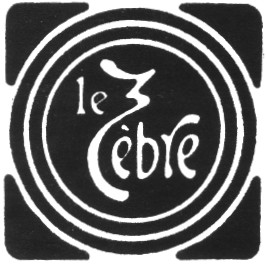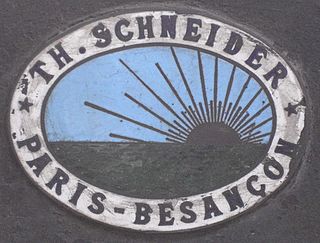The car
The new car offered more power, the size of its 4-cylinder engine now being increased to 1,452 cc. The car was sometimes known as the Citroën 10CV (10HP), the CV in the suffix being a reference to its fiscal power, a number computed according to the cylinder diameters and used to define its taxation class. In terms of engine power, maximum output was listed as 15 kW (20 bhp) at 2,100 rpm, which translated into a claimed top speed of 72 km/h (45 mph). Power reached the rear wheels via a three-speed manual transmission. There was no synchromesh.
Advertised fuel consumption was 8 l/100 km (35 mpg‑imp; 29 mpg‑US). The car quickly gained a reputation for robustness and economy.
Further developments and the Citroën B10
At the Paris Motor Show in October 1924 a Citroën 10CV was exhibited with "tout-acier" ("all-steel") body work. [2] Initially this model was offered only with a "Conduite Intérieure" (closed saloon/sedan) body, although a "Torpedo" bodied version was added during the spring of 1925. [2] For the 1925 model year the "all-steel" bodied car came to be designated as the Citroën B10, while cars with bodies using the (at this stage near universal for passenger cars) coach-builders' approach of constructing car bodies by attaching panels – often steel panels – to a stout hand-crafted timber frame continued to be designated as the Citroën B2. [2] As the year progressed, "Type B2" car bodies appeared that incorporated features of the "all-steel" "Type B10" such as the three seater cabriolet that appeared in the summer of 1925 featuring the rounded wings from the steel bodies B10 combined with the fuel filler opening of the earlier cars. [2] This model, along with a subsequent "Coupé De Ville," "Landaulet," and taxi version which featured the same combination, were listed as "Type B2" models while a number of the less mainstream body options were simply delisted. [2] The far from simple cut-off between the B2 and the B10 means that confusion sometimes arises over which are which.
Although the "all-steel" bodied B10 could be seen as a replacement for the B2, the chassis and mechanical elements were for the most part interchangeable, and both models were produced in parallel during 1925 and 1926. However, in October 1925 Citroën unveiled another upgrade for their 10CV model, the Citroën B12, which by the end of 1926 had replaced both the B2 and the B10.
Commercial
The all-steel bodied Citroën Type B10 unveiled in late 1924 effectively rewrote the rule-book for auto-making in Europe, even if the extent to which it had changed the economics of the business was not immediately apparent to most competitors. Nevertheless, the importance of the Type B10 sometimes tempts commentators who view history only backwards to overlook the Citroën Type B2.
For contemporary observers there could be no doubt about the significance of the Citroën Type B2, Europe's second mass-produced car, with 89,841 cars manufactured during a five-year period. The automobile business in France still contained a massively diverse range of companies in what had, till a few years before the outbreak of war, been the world's leading country for automobile production. But in 1925 there was no other manufacturer anywhere in Europe with anything approaching comparable production techniques or the B2's sales volumes with a single model.

Citroën is a French automobile brand. The "Automobiles Citroën" manufacturing company was founded on 4 June 1919 by André Citroën. Citroën has been owned by Stellantis since 2021 and previously was part of the PSA Group after Peugeot acquired 89.95% share in 1976. Citroën's head office is located in the Stellantis Poissy Plant in Saint-Ouen-sur-Seine since 2021 and its offices studies and research in Vélizy-Villacoublay, Poissy (CEMR), Carrières-sous-Poissy and Sochaux-Montbéliard.

The Citroën 2CV is an economy car produced by the French company Citroën from 1948 to 1990. Introduced at the 1948 Paris Salon de l'Automobile, it has an air-cooled engine that is mounted in the front and drives the front wheels.

Panhard was a French motor vehicle manufacturer that began as one of the first makers of automobiles. It was a manufacturer of light tactical and military vehicles. Its final incarnation, now owned by Renault Trucks Defense, was formed by the acquisition of Panhard by Auverland in 2005, and then by Renault in 2012. In 2018 Renault Trucks Defense, ACMAT and Panhard combined under a single brand, Arquus.

Unic was a French manufacturer founded in 1905, and active as an automobile producer until July 1938. After this the company continued to produce commercial vehicles, retaining its independence for a further fourteen years before being purchased in 1952 by Henri Pigozzi, who was keen to develop Unic as a commercial vehicle arm of the then flourishing Simca business.

The Citroën Ami is a four-door, front-wheel drive economy (B-segment) family car, manufactured and marketed by Citroën from 1961 to 1978.
The Amilcar was a French automobile manufactured from 1921 to 1940.
Berliet was a French manufacturer of automobiles, buses, trucks and military vehicles among other vehicles based in Vénissieux, outside of Lyon, France. Founded in 1899, and apart from a five-year period from 1944 to 1949 when it was put into 'administration sequestre' it was in private ownership until 1967 when it then became part of Citroën, and subsequently acquired by Renault in 1974 and merged with Saviem into a new Renault Trucks company in 1978. The Berliet marque was phased out by 1980.

A Kégresse track is a kind of rubber or canvas continuous track which uses a flexible belt rather than interlocking metal segments. It can be fitted to a conventional car or truck to turn it into a half-track, suitable for use over rough or soft ground. Conventional front wheels and steering are used, although skis may also be fitted. A snowmobile is a smaller ski-only type.

The AMC Schneider P 16, also known as the AMC Citroën-Kégresse Modèle 1929 or the Panhard-Schneider P16, was a half-track that was designed for the French Army before World War II.

The Citroën Type C was a light car made by the French Citroën car company between 1922 and 1926 with almost 81,000 units being made. Known as Citroën 5HP or 5CV in France and 7.5HP in Britain, it was the second model of automobile designed and marketed by André Citroën, between 1922 and 1926. It followed the 10HP "Type A " (1919), then 10HP "B2" (1921); they were the first European mass-produced cars.

Le Zèbre was a French make of car built between 1909 and 1931 in Puteaux, Seine.

The Peugeot Type 163 and associated models were produced from 1919 to 1924 by Peugeot. The car's engine placed it in the 10CV class.

Corre La Licorne was a French car maker founded 1901 in Levallois-Perret, at the north-western edge of central Paris, by Jean-Marie Corre. Cars were produced until 1947.

The Peugeot Type 177 B was a mid-range car produced between 1924 and 1929 by the French auto-maker Peugeot. With a fiscal horsepower of 10 CV, and a wheel base of 2670 mm, it competed in the same sector as the Citroën B2 and Renault KZ.

The Citroën B10 is an automobile produced by Citroën at André Citroën's factory in central Paris between 1924 and 1925.

The Citroën B12 is an automobile produced by Citroën at André Citroën's factory in central Paris, and available for public sale between October 1925 and January 1927. 38,381 were produced.

Th. Schneider was a French automobile manufacturer.

The Vivaquatre is a car produced by Renault between 1932 and 1939. Its large 4-cylinder engine placed it initially in the 10CV car tax class, though a larger engine later made it a contender in the 11CV class.

The Citroën Traction Avant is the world's first monocoque-bodied, front-wheel drive car that was mass-produced. A range of mostly 4-door saloons and executive cars, as well as longer wheelbased "Commerciale", and three row seating "Familiale" models, were produced with four- and six-cylinder engines, by French carmaker Citroën from 1934 to 1957. With some 760,000 units built, the Traction Avants were the first front-wheel drives made in such (six-figure) quantity.

Samochód pancerny wz. 28 was a Polish armoured car of the 1920s. Based on French-built Citroën-Kegresse B2 10CV half-track chassis, the vehicle became the standard armoured car of the Polish Army. However, due to low speed and problems with reliability, already in 1933 it was decided to return the completed wz. 28 armoured cars to the factory and rebuild them as all-wheel Samochód pancerny wz. 34.



















